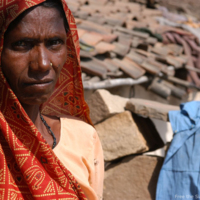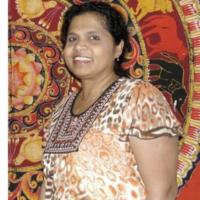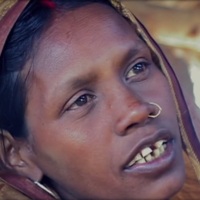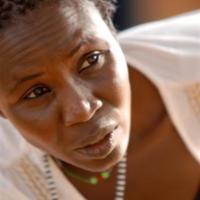
In 2011, the fighting came. The military burned the house and destroyed everything we owned. When the civil war came to our village, I assumed it would not last too long. That’s why we carried as much as we could, leaving everything else behind. Since then we never dared to go back…From the KIO side, they make some mines, and maybe the military also laid mines for a trap. So, no one can guarantee our security going back…We don’t know how long the civil war will go on.
[In the IDP camp] We had no car or motorbike, so we could not go out anywhere. The NGO gave us rations, but it was not enough for us because I have five children.
[…]
[T]hey showed a Chinese man to me. But I had told them I didn’t want to get married. My face said I was angry.
[T]he old woman [the trafficker] got mad at me. She said, “It is taking too long—this never happens!” Then we went to Fuzhou [in Fujian province in eastern China]. There I also did not find a man.…At that time my age was over 30. So, the price for a bride from 18 to 25 is a good price. They can ask for whatever they want from the Chinese family. But over 30-years-old they couldn’t get as good a price as they want. So, the Chinese men were making her upset.
[the trafficker received a call saying there were two girls near the Myanmar border. She rushed there leaving Ngai with another trafficker. After a year she escaped China.]
I was back in the camp. And then the IDPs looked down on me and condemned me. I joined some home prayer group, but wherever I went they looked at me with strange eyes. Looked down. And gossiped.
[two women were arrested for trafficking Seng Ja Ngai but they served short sentences and spread stories about her when they returned]
She told the people that the man had no legs or no hands. That he used prosthetic limbs. Tha to got married to this man. So, all the people thought and believed this. Even my husband believed this. My husband no longer believed me. My husband then divorced me and told me I could not have a relationship with my children anymore…In my environment among my relatives, every person condemns and looks down on me. I want relief from this situation…I want to heal.
[…]
Even though the INGOs and other aid groups come, for a family like us, it’s not enough. That’s why we have to go to the China side and work there – because there are no jobs in the place we live…if they can create job opportunities and job places where we stay, and provide us some career, that will be helpful for us. It means we won’t have to go to China.
Narrative provided by Human Rights Watch in their report “Give Us a Baby and We’ll Let You Go”: Trafficking of Kachin “Brides” from Myanmar to China









